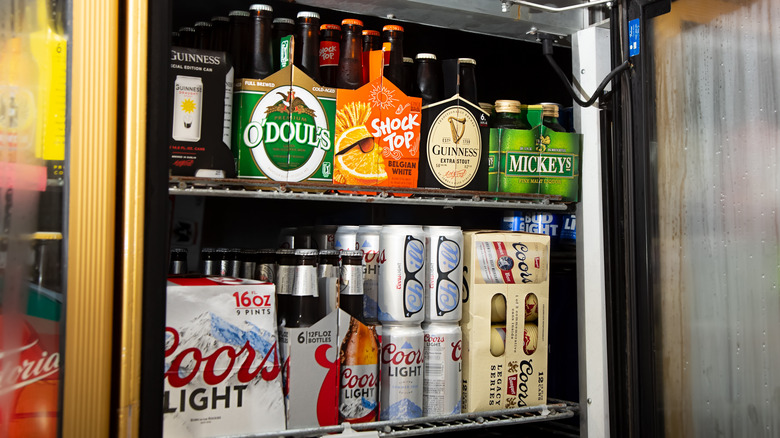Is A Malt Beverage The Same As Beer?
What is a malt beverage? Any drink that contains alcohol derived from the malting process. Okay, okay — that doesn't get us very far. One example of a malt drink is beer, but the category encompasses a wider (and growing) range of options, or "malternatives" as brewers explore new flavor profiles and combinations.
Your standard beer is distinct from another popular member of the category, flavored malt beverages (FMBs) and the simplest way to recognize the former is by its distinctive hoppy flavor and aroma. FMBs contain various other flavoring ingredients, and are sweeter — often fruit-forward with a smooth finish as a result of the malting process — not bearing any of beer's bitterness. Malt liquors are distinct from spirits, but can still contain grain or corn bases, and their flavor profile is closer to an FMB. Given how wide the category is, the alcohol content of malt beverages can vary wildly, from non-alcoholic malt beverages to beers like Samuel Adams' Utopias, which is banned in several states due to its whopping 28% alcohol content.
The FDA and Alcohol and Tobacco Tax and Trade Bureau (TTB) have different regulations for malt beverages and beers, so drink manufacturers tweak their recipes to get their products under certain categories. With ever-growing product lines in the ready-to-drink alcohol category, there is no shortage of malt-based drinks that bend the rules of what a beer technically is. Understanding the basics of how they are made is an effective way to help distinguish between beer, flavored malt beverages, and malt liquor.
Beer is a type of malt beverage
The starting point of all malt beverages is the malting process, which involves preparing a particular grain for brewing. Barley is the most common grain used in malting, but others like corn, wheat, rye, etc. are also popular. The brewing process extracts sugars from the grain, resulting in a sweet liquid called wort. Yeast added to the wort then converts this sugar to alcohol. Depending on how efficiently the yeast is allowed to work, the alcohol and sugar content can be controlled.
Most beers are made from malted barley or wheat, with some exceptions as in the case of gluten-free beers. Such beers use gluten-free grains like rice and millet but undergo the malting process nonetheless. Gluten-free beers are, therefore, also considered a malt beverage. The other essential ingredient that goes into making the world's favorite brew is hops, which provide many of beer's characteristic flavors and aromas. However, there are still several drinks like the notorious Four Loko which contains hops as well as several additional ingredients. Initially marketed as an "energy beer," it is actually a malt beverage.
The differences between flavored malt beverage, malt liquor, and beer
Despite the lines getting blurred by craft beverages, (the world's strongest beer is more like liquor than beer), it is generally easy enough to distinguish it from FMBs and malt liquor. All three beverage types use malt alcohol, but the process of making them as well as the finished product varies greatly. FMB is often made using a neutral malt base (NMB), which is essentially malt alcohol stripped of its "malty" notes. This neutral-flavored alcohol base is used by manufacturers in a wide range of drink flavor profiles. FMB includes everything from Mike's Hard Lemonade to Fireball Cinnamon (which isn't actually whiskey).
Malt liquor has more similarities to beer since it uses malt alcohol that has retained its flavor (unlike the NMB used in malt beverages). Malt liquor generally uses more malt and less hops than beer, giving it a sweeter taste and higher alcohol content that can range from 4% to 9%; it also has less fizz. Originally considered a beverage for budget-concious drinkers, there are now several high-end and craft malt liquor brands that are outgrowing this image.


